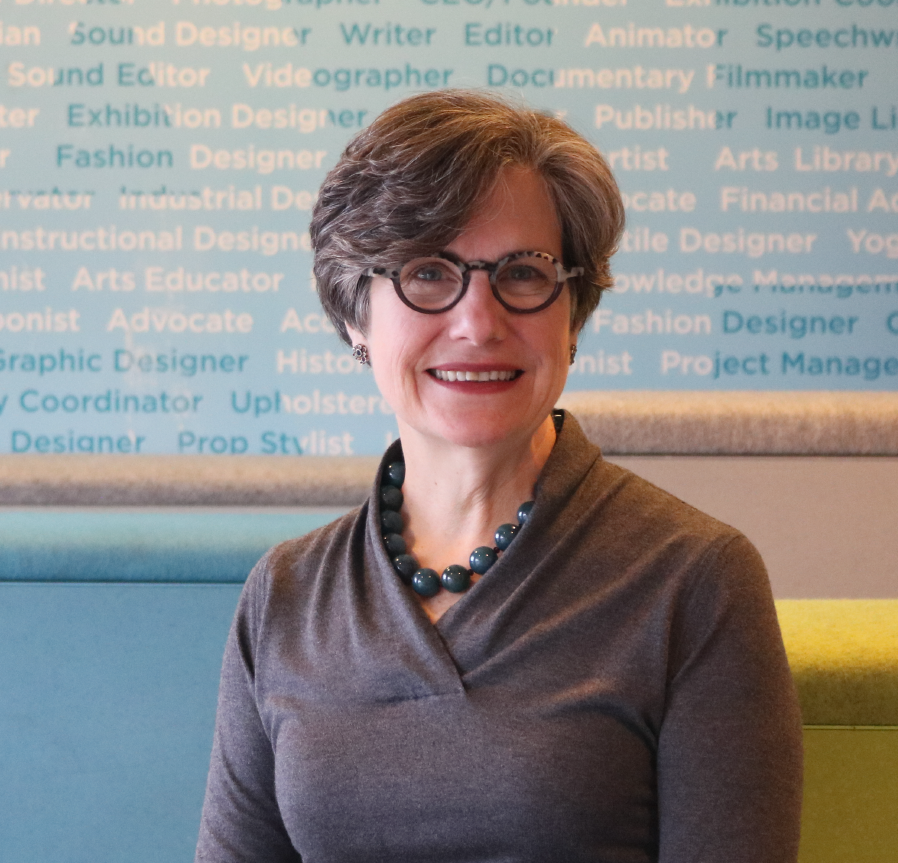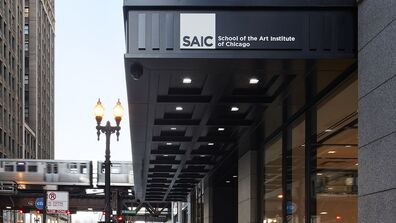
Charting a Career Path in 2020
Since March, the job market has undergone seismic shifts, creating both unique challenges and opportunities. Industries are changing. Networking has gone virtual. With access to the internet, many individuals can work anywhere—from anywhere.
How will this affect School of the Art Institute of Chicago (SAIC) graduates? We sat down with Rosalie Shemmer, dean of Career and Professional Experience (CAPX), for the latest on job search strategies, maintaining a studio practice with limited resources, and building a network remotely.

How should people approach job search strategies differently this year?
Job seekers are facing challenges unlike any we have experienced in the past. There is a shift in both how we work and where we find opportunities. We used to advise job seekers to focus on a specific area, but during this time, it is important to cast a wide net and focus on opportunities that utilize your skills instead of on finding the perfect job.
While some organizations had already begun to recruit online, this practice is on its way to becoming the norm. The benefit of online recruiting is that it’s a two-way process. Employers and organizations are looking online to find candidates, and you can make your work visible on social media and platforms like LinkedIn and Handshake. A personal website is a great way to show your work, as is Instagram, but it must be highly curated. You can create a separate Instagram account to share pictures with friends!
Some things haven’t changed. Most opportunities continue to be found through networking.
How can people network remotely?
In addition to making sure you have a strong online presence, follow peers, mentors, groups, and organizations that can help you make new connections. Many are posting opportunities in Facebook groups and Instagram stories. For example, if you are an art therapy and counseling student, you can follow @saicarttherapy, @blackarttherapistnetwork, and @arttherapyorg. You should also look into remote conferences. Without the cost of travel and hotels, they're much more affordable to attend, and they’re a great way to learn and network.
I spoke with Eric Hotchkiss (MDes 2010) about networking. Eric is an artist, designer, and faculty member who developed Made in Englewood Inc., a community-focused, interdisciplinary design studio. Eric shared the importance of networking by supporting the communities we live in. Even during a time of social distance, there are ways to support local businesses, get to know your neighbors, and volunteer. These sorts of connections are essential, as word of mouth continues to be an important component of networking.
CAPX can also support your networking efforts. Career advisors can help alums (and students) develop their LinkedIn profile and explain how to connect with other SAIC alums. We also host a remote Expert Exchange every week, where small groups of students and alums meet artists, creative professionals, and business leaders to discuss venture ideas and future careers.
How can artists continue to work on their portfolios if they have limited resources or access to facilities?
I asked Anna Russett (BFA 2014), who worked at Havas Chicago as a social media director and now works independently as a strategist and social influencer, for her advice. She shared that “YouTube is a great place to see how other creative people are MacGyver-ing their at-home studio setup and making the most with what they have. Also, there are a number of Facebook groups in which people post things they are giving away for free (search ‘Buy Nothing, Sell Nothing’). I’ve seen so many different items given away on these groups, including art materials like paper, wood, paint, and more!”
What general advice would you have for recent graduates or people looking to transition to a new field or opportunity?
For our recent alums, be assured that there is a lot of empathy for the class of 2020. No one will hold it against you if you accept a part-time job or take a long time to get a job. It’s okay to say your post-grad opportunity or job was canceled or that your job was eliminated due to the pandemic when interviewing for new positions.
Anna suggests that recent alums and people in transition reach out to mentors, teachers, and friends of all work backgrounds and let them know what skills you have and what you love to do. Even if they don’t have an opportunity for you at the moment, you’ve planted a seed in their mind that you’re eager, skilled, and looking for work.
When exploring, be patient and enjoy the process of learning. Artists can build their knowledge, skills, portfolio, and network through internships, residencies, and exhibitions. These short-term experiences will lead to longer-term opportunities.
What opportunities have been brought on by the pandemic, either for job seekers or employers, that you’re excited about?
Six months in we’re seeing how resilient we are, and the ways the digital world has opened doors. We’re seeing increased attendance at virtual events. There are no space constraints, and access is available regardless of locations. We can connect with mentors or accept a dream job across the country or globe without packing a suitcase and relocating. I am excited to see where this virtual world will lead us.
What skill sets do art and design students have that make them good candidates in 2020?
SAIC students and alums have a strong advantage in today’s market thanks to the flexibility of our multidisciplinary curriculum. Students who enroll in a specific major are typically focused on one career track. This is not true for SAIC students, who have the ability to take classes across many disciplines and can find creative roles in a variety of industries.
When applying for opportunities, list your various skills on your résumé, and demonstrate how you use those skills on your website and your portfolio. Technical skills will make a good candidate, but soft skills are equally important factors. There are so many attributes that make art and design students stand out from others—they are innovators, creative problem solvers, makers, are comfortable in critique cultures, and they work alone and in teams. Successful candidates are able to show their best work and talk about it.
